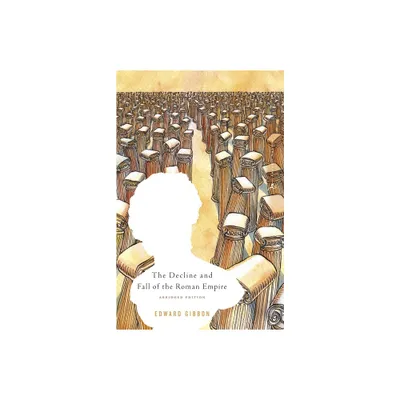Home
the Decline and Fall of Roman Empire: A Modern Abridgment by Moses Hadas
Loading Inventory...
Barnes and Noble
the Decline and Fall of Roman Empire: A Modern Abridgment by Moses Hadas
Current price: $34.99


Barnes and Noble
the Decline and Fall of Roman Empire: A Modern Abridgment by Moses Hadas
Current price: $34.99
Loading Inventory...
Size: Audiobook
*Product Information may vary - to confirm product availability, pricing, and additional information please contact Barnes and Noble
The Classic History of Rome’s Fall From Glory in
an Unparalleled Abridgment and Reintroduction
Few historical works encompass the pathos, drama, and meticulous detail of Edward Gibbon’s extraordinary record of Rome’s demise,
The History of the Decline and Fall of the Roman Empire,
which the English historian issued in six volumes from 1776 to 1789.
In 1962, classics scholar Moses Hadas produced an extraordinary—and long out-of-print—modern abridgment of Gibbon’s landmark, opening its pages to the broadest possible range of readers. Now, Hadas’s gloriously readable digest is available once more—with a new and wide-spanning introduction by PEN Award-winning historian Mitch Horowitz and an appendix of aphorisms from the book.
An artform in itself, “Hadas’s effort is among the finest of any abridged works in English,” Mitch writes in his introduction. “His condensation exposed this vital book to many readers who would have otherwise bypassed it. Hadas intrepidly identified and distilled a narrative throughline in Gibbon’s six volumes, reducing more than 1,000,000 words—not counting nearly half as many more in source notes—to fewer than 100,000 words.”
In its sweeping yet concise arc of history, this abridgment of
Decline and Fall
covers a span of almost 1,500 years from the time of Trajan in 180 A.D. to the siege of Constantinople by the Ottoman Turks in 1453. “Its theme,” Hadas writes, “is the most overwhelming phenomenon in recorded history—the disintegration not of a nation but of an old and rich and apparently indestructible civilization.”
In his introduction, Mitch clarifies historical confusions, such as the highly unorthodox form of early Christianity to which the Emperor Constantine converted in the early fourth century and the syncretic nature of Roman—and modern—religious traditions.
For readers eager to experience Gibbon’s brilliant primary historicism, to understand the long decline of Rome—and the reasons for the Empire’s demise—there exists no better or more accessible condensation of
Decline and Fall.
an Unparalleled Abridgment and Reintroduction
Few historical works encompass the pathos, drama, and meticulous detail of Edward Gibbon’s extraordinary record of Rome’s demise,
The History of the Decline and Fall of the Roman Empire,
which the English historian issued in six volumes from 1776 to 1789.
In 1962, classics scholar Moses Hadas produced an extraordinary—and long out-of-print—modern abridgment of Gibbon’s landmark, opening its pages to the broadest possible range of readers. Now, Hadas’s gloriously readable digest is available once more—with a new and wide-spanning introduction by PEN Award-winning historian Mitch Horowitz and an appendix of aphorisms from the book.
An artform in itself, “Hadas’s effort is among the finest of any abridged works in English,” Mitch writes in his introduction. “His condensation exposed this vital book to many readers who would have otherwise bypassed it. Hadas intrepidly identified and distilled a narrative throughline in Gibbon’s six volumes, reducing more than 1,000,000 words—not counting nearly half as many more in source notes—to fewer than 100,000 words.”
In its sweeping yet concise arc of history, this abridgment of
Decline and Fall
covers a span of almost 1,500 years from the time of Trajan in 180 A.D. to the siege of Constantinople by the Ottoman Turks in 1453. “Its theme,” Hadas writes, “is the most overwhelming phenomenon in recorded history—the disintegration not of a nation but of an old and rich and apparently indestructible civilization.”
In his introduction, Mitch clarifies historical confusions, such as the highly unorthodox form of early Christianity to which the Emperor Constantine converted in the early fourth century and the syncretic nature of Roman—and modern—religious traditions.
For readers eager to experience Gibbon’s brilliant primary historicism, to understand the long decline of Rome—and the reasons for the Empire’s demise—there exists no better or more accessible condensation of
Decline and Fall.


















